What Can Being Barefoot Do for You?
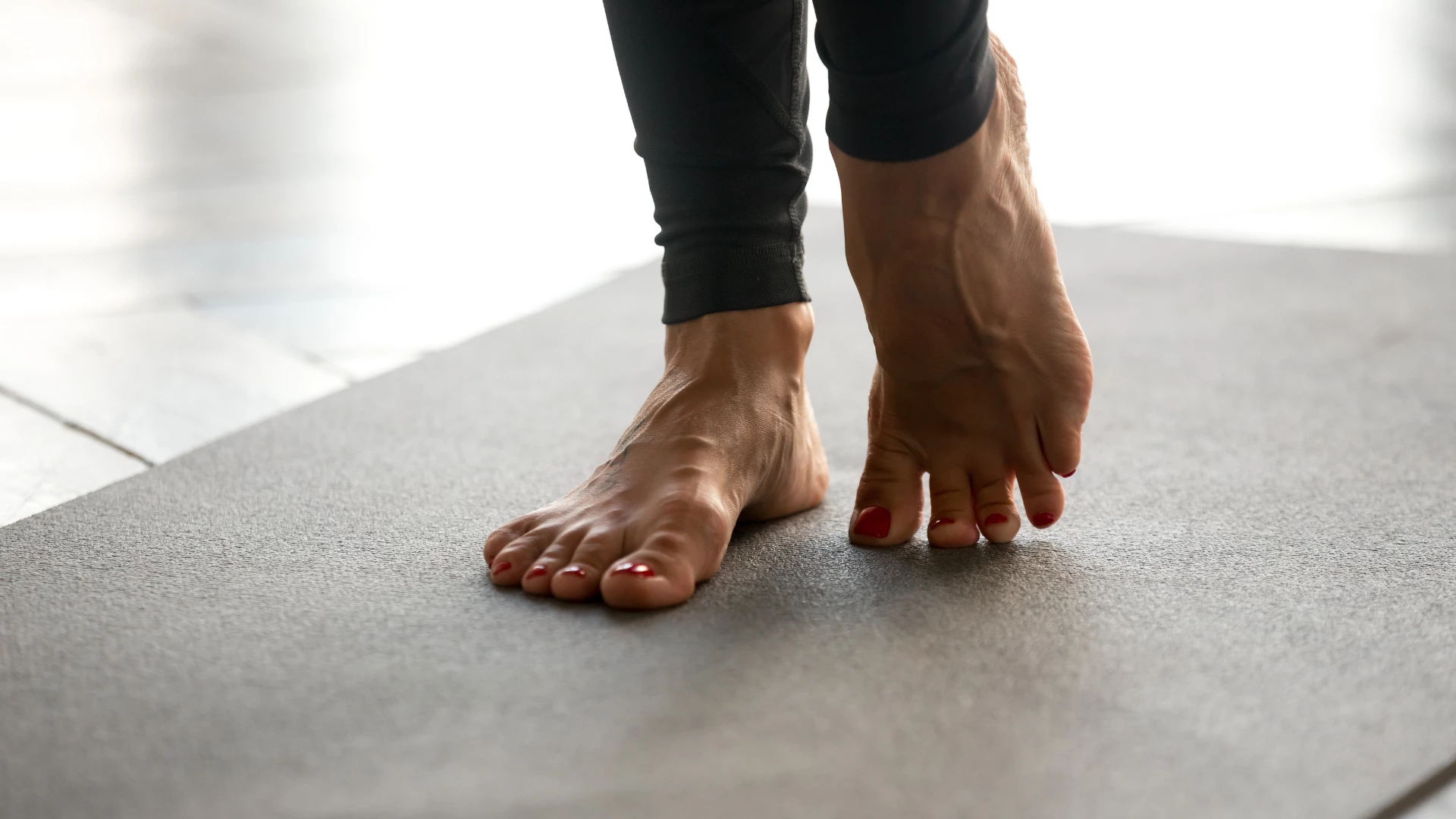
Article At A Glance
Being barefoot can strengthen and mobilize your feet and promote proprioception. Here’s how to reconnect with your feet and enjoy the many health benefits of going barefoot.
With summer right around the corner. ’Tis the season for being barefoot, especially since our feet otherwise spend long periods of time wearing boots and shoes. But more than just feeling good, I’d like to tell you why it’s important to be barefoot as much as possible.
Before doing so, there are disclaimers to this statement:
- If you suffer from severe pain in your feet or elsewhere without your supportive shoes, then continue wearing them, until I can convince you to strengthen and mobilize your feet.
- If you have neuropathy or any other condition diagnosed by a physician where you must wear supportive shoes to protect you from further damage.
- Supportive shoes are shoes that:
- advertise high levels of cushioning, or stabilization
- have half balls or rocker bottoms
- limit mobility of our feet as well as their connection with the ground
Sandals are Not the Same as Being Barefoot
Flip-flops, open-toe shoes and backless sandals are shoes that require your toes to grip/work to keep them on. There are no laces, zippers or support around the ankle.
Barefoot is … well, barefoot. And there are many benefits to this natural foot state that we associate with hippies, yogis, modern dancers, and babies.
What Are the Benefits of Being Barefoot?
As a parent, I want my kids barefoot so that their feet move, their arches develop, and they grow strong. There have been studies done on early walkers, like this one: Effect of Shoe Flexibility on Plantar Loading in Children Learning to Walk demonstrating that the more flexible a shoe, the greater loading of the foot, and therefore, the greater the proprioception (or position sense). This study shows that children running in shoes have less motion, thereby forcing their ankles to take up that stress of decreased foot motion.
Copious research has shown the benefits of shoes for our feet during running. This is probably because running shoe companies have to highlight shoe benefits to increase shoe sales. Given the extensive research, you’ll find many articles stating that muscle activation increases in a barefoot condition. Yet there are also articles that are unclear, and some that even state the opposite. Take this systematic review: Barefoot vs common footwear: A systematic review of the kinematic, kinetic and muscle activity differences during walking, where you can easily see that results are mixed when it comes to muscular activity.
How Being Barefoot Can Strengthen and Mobilize Our Feet
We can learn to create arches, increase mobility, and strengthen our feet by doing specific exercises (Mulligan et al) AND by being barefoot more often (especially when walking and exercising).
So yes, this is my push for you (and everyone you know) to go barefoot, albeit gradually, and to also try a few exercises and techniques to get your feet and the rest of your body ready for the transition.
Why Wearing Shoes Doesn’t Make Sense
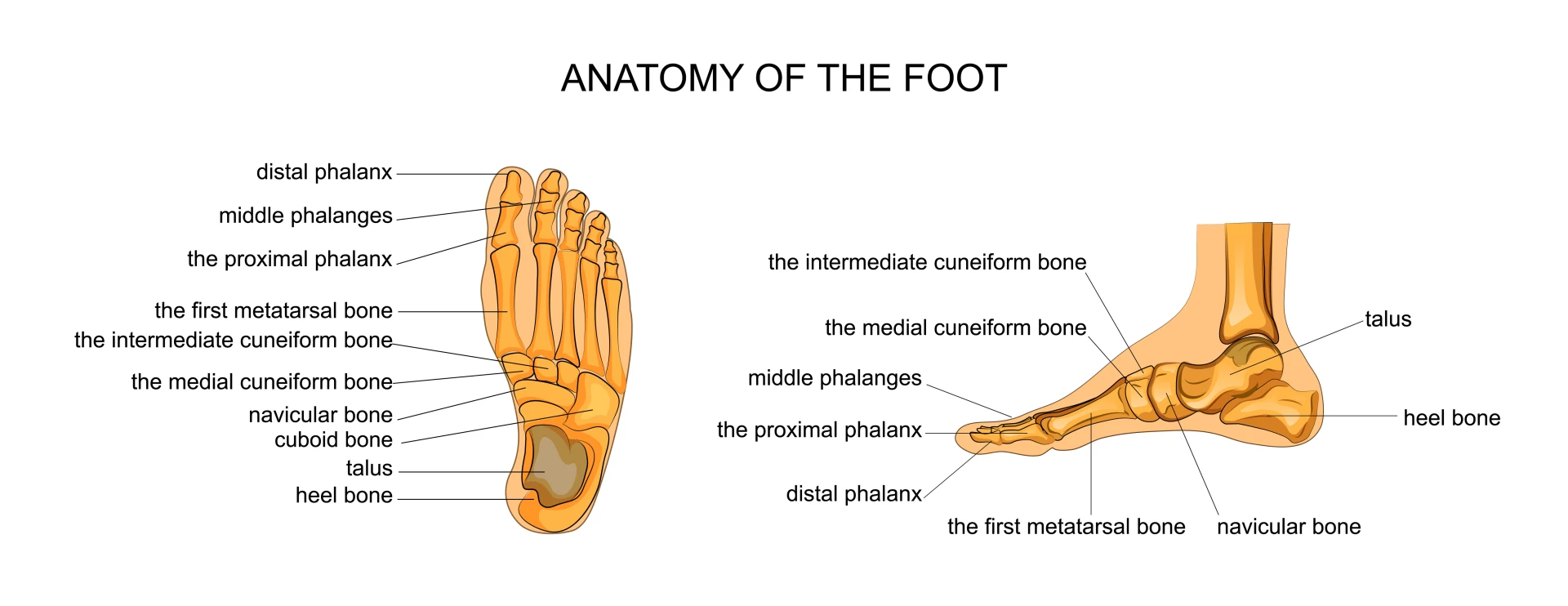
If we understand the mechanics of walking, then wearing supportive shoes doesn’t make sense.
There are 26 bones and 33 joints in our feet, all of which are designed to move. The inherent design of our feet and ankles is for that movement to collectively provide the windlass effect, where the foot can act as both a rigid level and an adaptable shock absorber. When we walk, our feet move in a figure 8-type motion, from supination (or higher arch lift) to pronation (flatter arch) and back to supination in order to create a powerful push.
Muscles generally work when joints move. If joints don’t move, muscles can’t work. For example, take the biceps in our arms. If our elbows couldn’t bend and straighten, our biceps wouldn’t be able to work. It’s that simple and straightforward in all our joints.
Muscles help create arches and strong feet. Supportive shoes with thick soles limit our ability to move the 33 joints in our feet. When we can’t move those joints we can’t activate the muscles of our feet.
Muscles work with the connective tissue to create and support a strong foot for the push-off phase of every step we take. If we lose this, we collapse in our feet, and create uneven pressure on either the insides or outsides of our feet, depending on our tendencies and habits.
This powerful and stable push-off is important in normal walking, and it’s increasingly important when we run or jump. If you think of running as hopping from one leg to the next, then it makes sense that a strong foot would be a good base from which to launch. Conversely, a floppy, collapsing foot would cause changes in our muscle response and joint loading from our ankles up to our neck.
Our Arches Are Strong
We have three arches in our feet. Each has a role in creating a platform for our entire body to balance upon. The three arches create a keystone at the top of the arch–the strongest part of our foot–and coincidentally, where our center of mass should be situated. Our center of mass is in our pelvis, so our pelvis should theoretically be over the keystone of our arch. If we lose our arch, we may lose the awareness of where our center of mass should be. As a result, our center of mass may end up behind, or sometimes in front of, our keystone.
An entire sea of (unwanted) changes occur in the body north of the feet—changes in our muscle tension, bony alignment, nervous system and connective tissue—when our center of mass is not aligned over the keystone.
Being Barefoot Promotes Proprioception
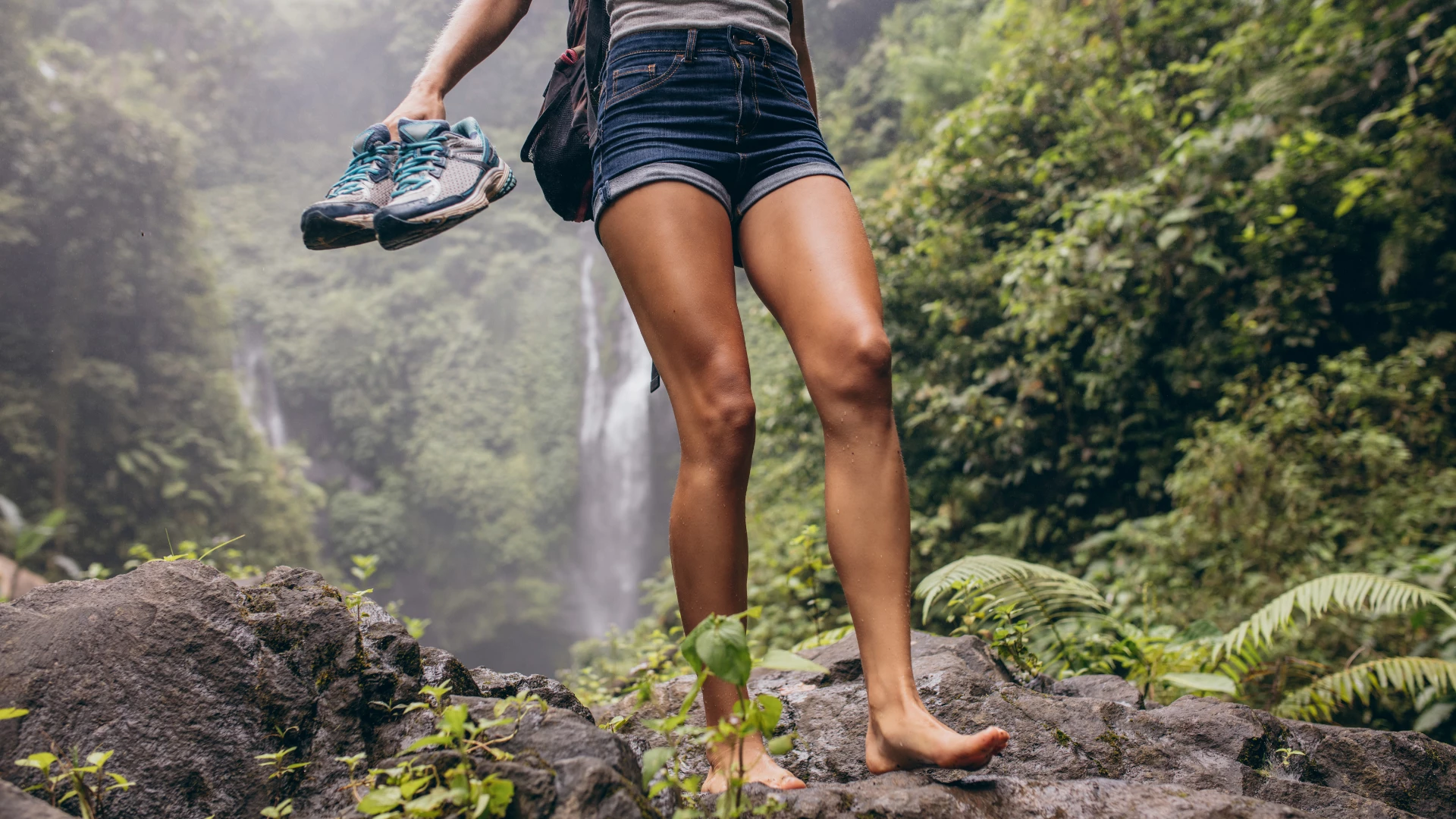
Our body has an inherent sense of where we are in space. It’s called proprioception. Proprioceptors live in our feet and ankle joints and provide us with balance and the ability to respond to changes in surface, direction, speed, etc. by coordinating muscles to rapidly fire and work together.
We lose proprioception when our feet are stiff and our joints don’t move. If our feet are bunched up and locked into a stiff, unmoving position in shoes, over time we begin to lose mobility and thus, proprioception.
Being Barefoot Grounds Us
Feeling grounded can be a product of physical grounding, as well as a mindful awareness of, and attention to, our feet and their connection with the ground. Spending time in shoes that remove us from that direct connection separates us from the ground, perhaps physically and emotionally. Reconnecting with the ground by being barefoot, embracing the natural movement of the foot, and paying close attention to the skin and surface of the foot and its interaction with the ground can regrow this connection, this rooting. This ultimately provides us with a physical and emotional feeling of grounding.
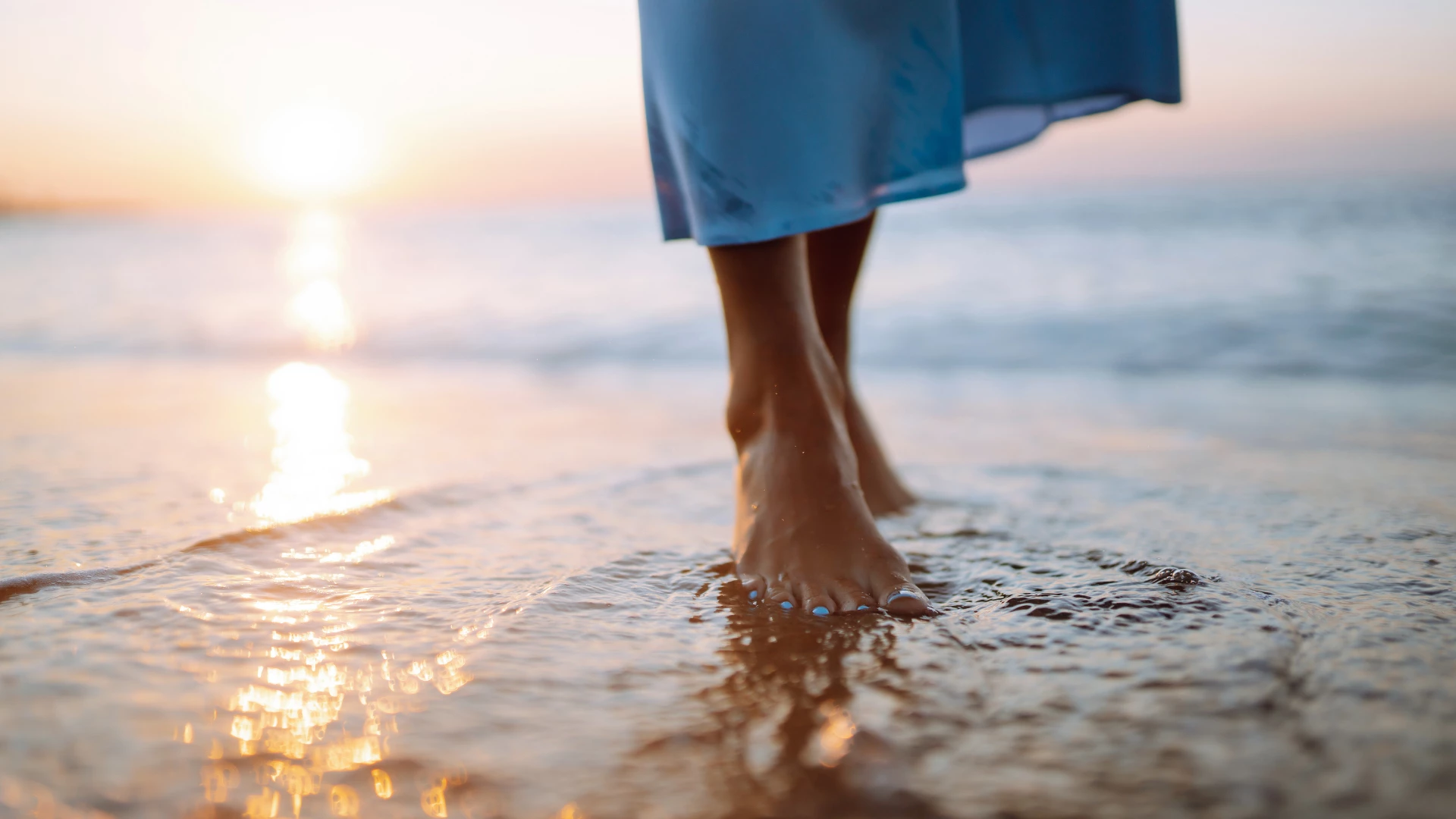
Fun fact: When you walk barefoot on the Earth (sand, dirt, grass, etc) your body picks up free ions from Earth’s surface that act as antioxidants in your system.
5 Ways to Restore Your Connection to Being Barefoot
Here’s a quick fix to restoring foot mobility, proprioception, finding the keystone and understanding push-off mechanics.
1. Tennis Ball Massage
Get yourself a tennis ball, or a ball of similar size. It should be firm, although a golf ball might be too firm.
- Sit or stand and roll the ball under your foot, all over at first, as if you are trying to paint the entire foot with the ball.
- Then zero in your efforts, starting with the ball at the heel and moving it slowly up toward each knuckle, one at a time. Spend some time here, and play around with how much weight you load into the foot.
- Do this every day.

2. Toe Spread and Ankle Circles
Interlace your fingers between your toes and spend time spreading and wiggling, then draw circles with your ankles in both directions.
3. Practice Tripod Foot
Creating the arches in our feet requires bearing weight in the right places with the right distribution. If we don’t, then mechanically the arches can’t form or subsequently work to support us. The tripod foot incorporates three places where weight should be evenly distributed under the sole of the foot.
- As you stand, imagine a tripod with the three legs underneath: the knuckle of the big toe, the knuckle of the baby toe, and the dead center of your heel bone.
- Then imagine/envision activating the tiny muscles in your foot to create your arch.
- A good cue: Try to palm the floor with your foot. Without using the toes, just use the arch, as though you’re palming a basketball.
- Take this mindful awareness of tripod foot with you as you await the subway or stand in line at the grocery store.
4. Walk, Stand, and Practice Yoga with Tripod Foot
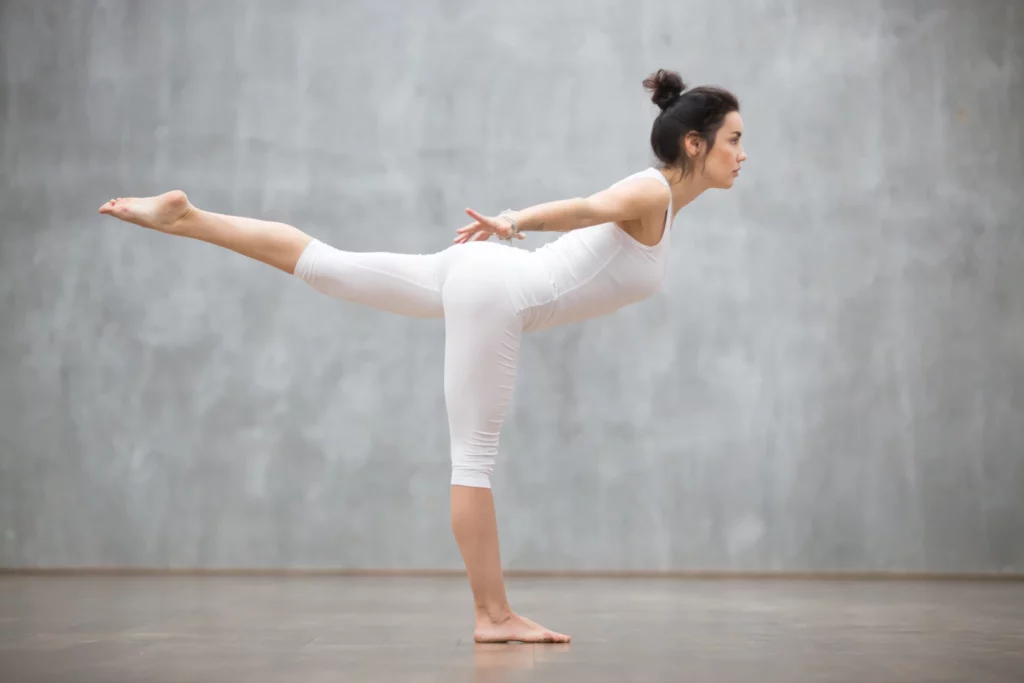
5. Take Your Time
Being barefoot after wearing shoes for a long time can be a shock to your system. But it can also be medicine for your feet, ankles, knees, back, etc. So take doses of barefoot time, starting with 10 minutes the first day and working up to more time, if it’s comfortable for you. Assuming all goes well, take it outside onto the grass, sand, etc. Different surfaces will provide your feet and your nervous system with new experiences.
Time to take the next step—literally! Be bold. Be barefoot. And be better off for it.
Also, read...
Tired, Achy Feet? Try These 6 Yoga Poses for Relief
3 Plantar Fascia Stretches: Freedom from Foot Pain
A 10-Minute Yoga Practice for Plantar Fasciitis Relief
Related courses
Yoga and Myofascial Release: Releasing Chronic Tension with the Bodymind Ballwork Method
Yoga and Detoxification: Tips for Stimulating Lymphatic Health

Diana Zotos Florio is a physical therapist, yoga teacher, certified strength and conditioning specialist, mother of three, and the cofounder of Threes Physiyoga Method. A constant mover, she loves all forms of exercise and considers movement to truly be medicine.
Prior to founding TPM, Diana spent seven years working as a physical therapist at the Hospital for Special Surgery treating anyone from inpatient joint replacement patients to professional marathon runners. She’s been practicing yoga for over 20 years and has always treated her patients through the lens of yoga. Diana completed yoga teacher training at OM Yoga in NYC in 2010.
- Bart Dingenen MSc, P. T., et al. “Muscle-activation onset times with shoes and foot orthoses in participants with chronic ankle instability.” Journal of athletic training 50.7 (2015): 688.
- Buckland, Melanie A., et al. “The Effect of Torsional Shoe Flexibility on Gait and Stability in Children Learning to Walk.” Pediatric Physical Therapy 26.4 (2014): 411-417.
- Franklin, Simon, et al. “Barefoot vs common footwear: a systematic review of the kinematic, kinetic and muscle activity differences during walking.” Gait & posture 42.3 (2015): 230-239.
- Hillstrom, Howard J., et al. “Effect of shoe flexibility on plantar loading in children learning to walk.” Journal of the American Podiatric Medical Association 103.4 (2013): 297-305.
- Mulligan, Cook Man Ther. 2013 Oct;18(5):425-30. doi: 10.1016/j.math.2013.02.007. Epub 2013 Apr 28. Effect of plantar intrinsic muscle training on medial longitudinal arch morphology and dynamic function.
- Klous, Miriam, et al. “DIFFERENCES IN KINETICS AND COORDINATION BETWEEN WALKING BAREFOOT AND WALKING IN ROCKER BOTTOM SHOES.” Journal of Sports Research 2.3 (2015): 77-88.
- Malisoux, Laurent, et al. “Injury risk in runners using standard or motion control shoes: a randomised controlled trial with participant and assessor blinding.” British Journal of sports medicine (2016): bjsports-2015.
- Terrier, Philippe, François Luthi, and Olivier Dériaz. “Do orthopaedic shoes improve local dynamic stability of gait? An observational study in patients with chronic foot and ankle injuries.” BMC musculoskeletal disorders 14.1 (2013): 1.




